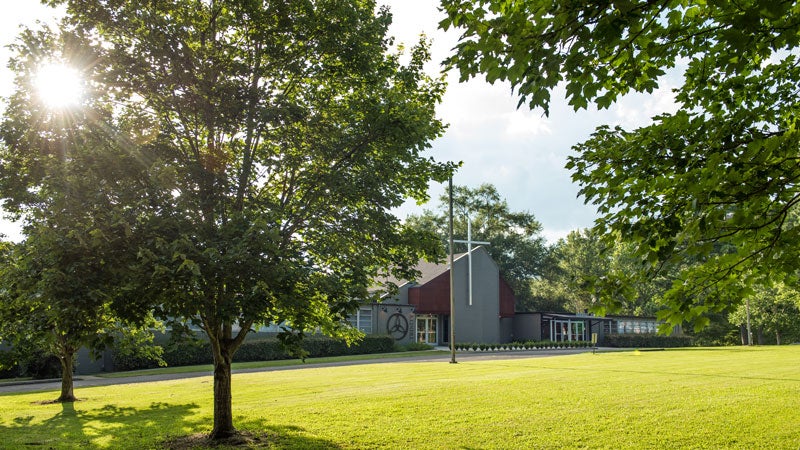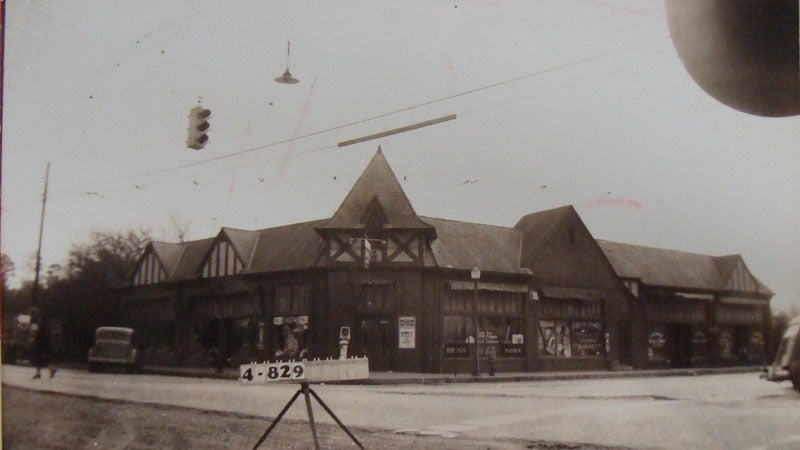Mildred Berryhill joined Oakmont United Methodist Church in 1961, only six years after the church opened. Decades later, her pile of old church directories are filled with memories—the years of vacation bible school, summer church picnics and singing in the choir. Oakmont was the church where her family grew. Her boys were baptized in the there. Her daughter was married there.
Though when Mildred heard the plans for Oakmont—ones that would save the church from its recent decline—her immediate reaction was hesitant. In January 2016, Oakmont shut its doors—but only for 30 days—to reopen with a new name and a new identity as a second campus of Trinity United Methodist.
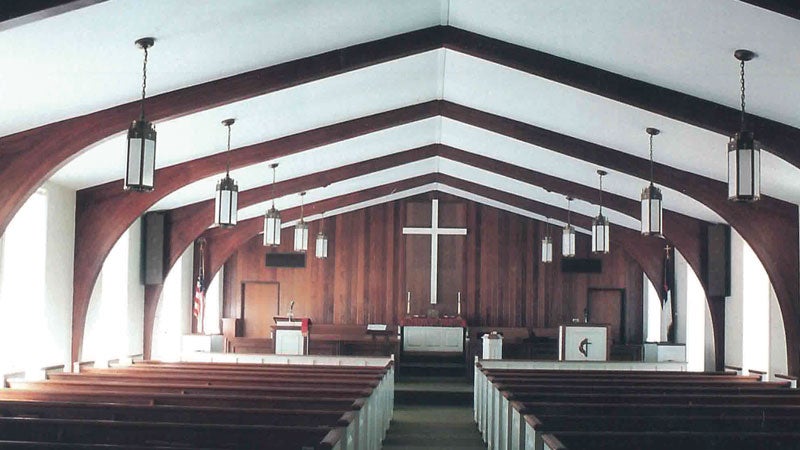
The original Oakmont UMC sanctuary was renovated when the church merged with Trinity UMC. This photo is from an old church directory.
Was Mildred excited about the merger? “No,” she says with a laugh, “because I am old and set in my ways. But it has saved the church. There are so many more young people coming now, and it has been wonderful.”
Like many churches in America, Oakmont had been declining for years. Its congregation had grown older and its resources became more and more limited. Jack Hinnen accepted the lead pastor position at Oakmont only months before Trinity and Oakmont announced their intentions to merge. In the fall of 2015, the two churches made the merge official with a unanimous vote, deciding they were better together than letting Oakmont die.
“I think the best way that people can be a good church is organically,” says Jack, whose title is now teaching pastor for Trinity West Homewood. “It’s knowing the people who are part of the community. Unfortunately, mergers are not very organic.”
While the physical space reflects a new era for the church, which is more than 60 years old, a fresh coat of paint cannot cover up the fact that change is difficult. “Life is messy, so [the merger] has not been perfect because life is not like that,” Jack says. “There was a lot of grief to work through, and a lot of figuring out who we were and are. You take something that had been a large part of people’s lives and change it into something new. That’s hard to work through, and I would say that some of us are still working through it.”
Despite the challenges, the decision to merge has proved to be a fruitful endeavor. Before the merge, Oakmont was lucky to have 50 people attend a single Sunday church service. Today, Trinity West Homewood has more than 150 people in attendance for two Sunday services, and all signs are pointing toward continued growth. “In this merger, we have been trying to reclaim the life blood of the church, which has to be the community,” Jack says. “If the walls between the church and the community continue to grow instead of being torn down, we might as well close up shop.”
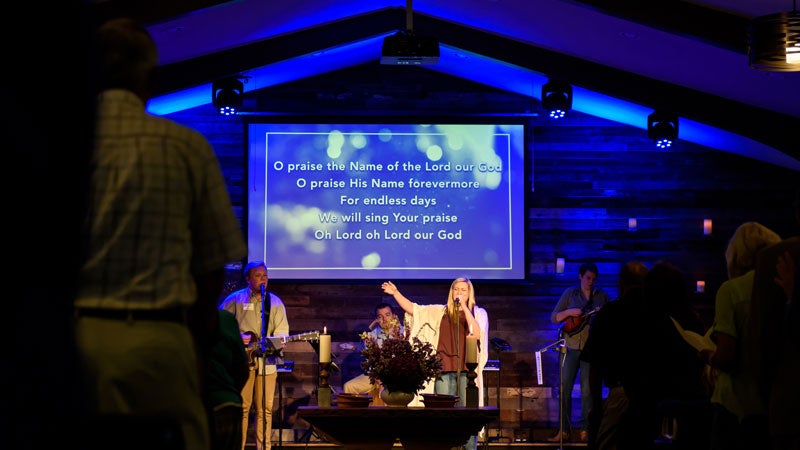 In the height of Trinity’s excitement surrounding the merge, Trinity West Homewood had 400 people worshipping with them on Sunday. “It was crazy and not realistic,” Jack says. “Now some of that excitement has died, and we are now doing the slow, hard work of inviting our neighbors organically—having people come and check it out.”
In the height of Trinity’s excitement surrounding the merge, Trinity West Homewood had 400 people worshipping with them on Sunday. “It was crazy and not realistic,” Jack says. “Now some of that excitement has died, and we are now doing the slow, hard work of inviting our neighbors organically—having people come and check it out.”
Trinity West Homewood has extended this invitation in a number of ways outside of its Sunday operations—from hosting community events like outdoor summer movie nights to providing resources like its “Modern Family Closet,” where families supporting foster children can take and give supplies as needed.
Scotty Wild, a graduate student at UAB and West Homewood resident, began attending the church soon after Jack’s arrival as pastor. Since the merger, he says, the overall energy has changed. “Each Sunday, we have a community hour between the two services, and I love it. Not only does it let us to get to know each other better, but we often use it for ministry,” he says. “Like in the winter, everyone worked to put together small packets for individuals who are homeless in the Birmingham area. It was something we were able to do as a church community that serves West Homewood and greater Birmingham.”
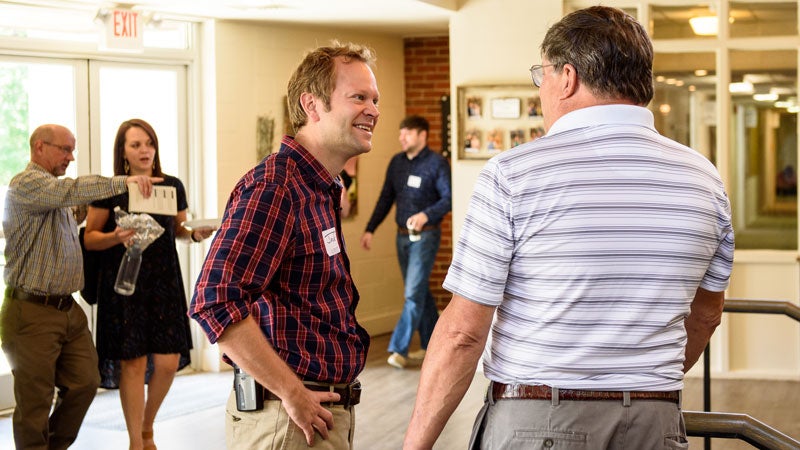
Jack Hinnen, pictured on left
Scotty is just one of the many new members who have come to Trinity West Homewood under its new identity, but Jack is quick to show respect to the long-time members who have stayed with the church throughout the entire process. “The people who gave up control of this place were in some way very brave,” he says. “I told people that if we could merge these two churches—if Trinity and Oakmont could give up their identities to become something new and unknown—if people could give up their control, then it would be a mark to me that God exists.”
While this may seem like a bold statement, from Jack’s point of view, something drastic had to be done to save the church. “When a business dies, they run out of money, and they close,” he says. “But churches don’t die until everyone is dead, so churches die very, very slowly. They can get into a certain atrophy where they don’t realize it until after 20 or 30 years have passed.”
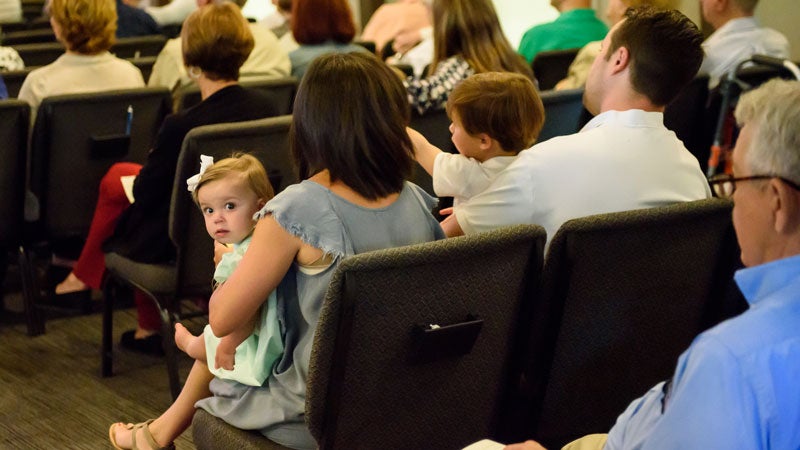 In a way, this merge was a great leap of faith. There were no guarantees that renovations would make the space feel more inviting or that a new pastor would attract a new generation of members. Yet with faith, the church moved forward, asking a higher power to take full control. “The church now has all of the things that happen in life,” Jack says. “We have deaths, yes, but we have babies being born. We have baptisms happening. We have people getting married.”
In a way, this merge was a great leap of faith. There were no guarantees that renovations would make the space feel more inviting or that a new pastor would attract a new generation of members. Yet with faith, the church moved forward, asking a higher power to take full control. “The church now has all of the things that happen in life,” Jack says. “We have deaths, yes, but we have babies being born. We have baptisms happening. We have people getting married.”
Altogether, Jack sees the church’s decades-old location as a perfect place for the community to converge. “Trinity West Homewood is in this awesome place to bring people together who have no business being together,” Jack says. “We have the city to our north. We have industry to our west. We have affluency to our east and suburbs to our south. There are few churches so well placed to so something incredible.”

